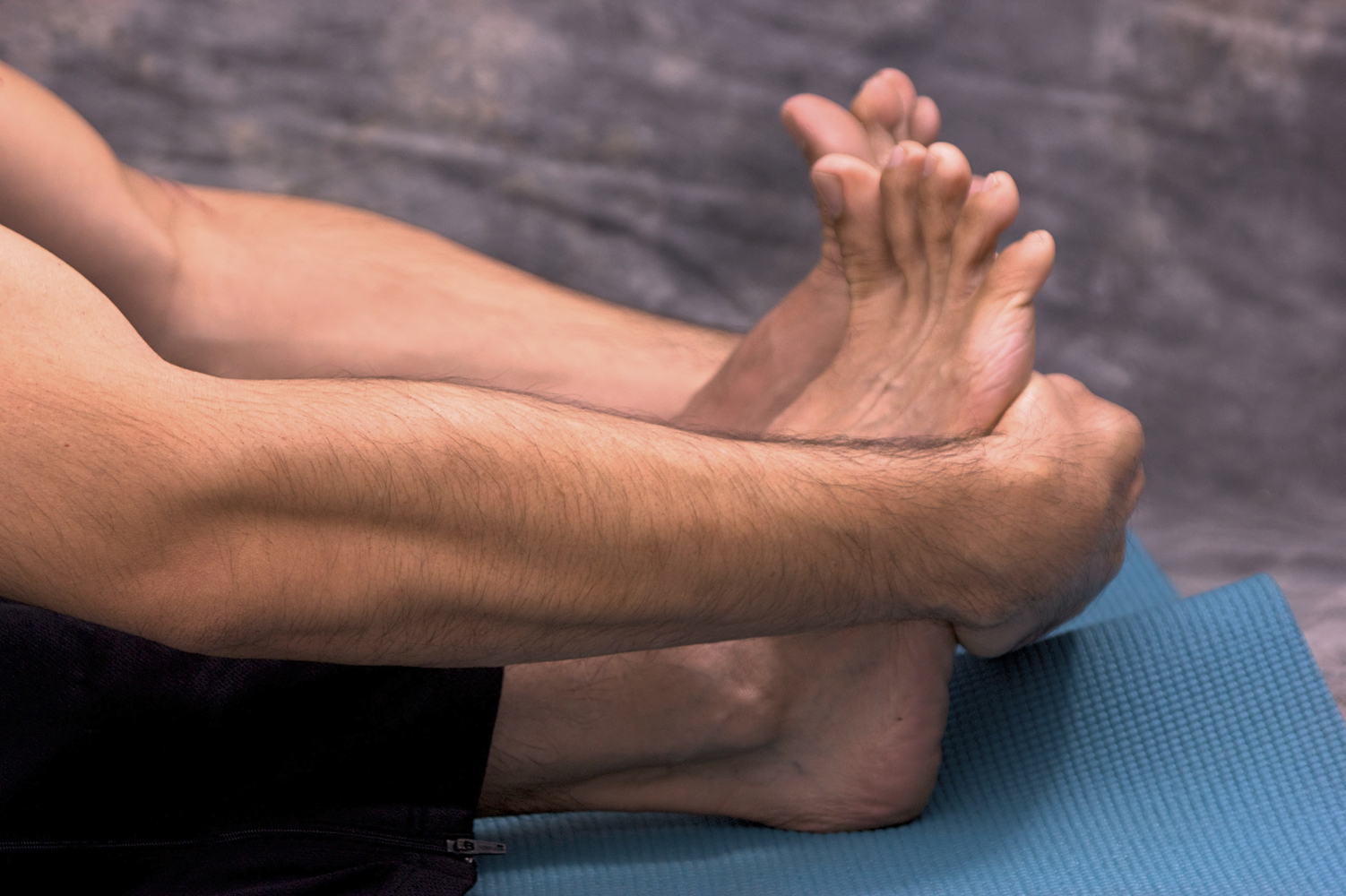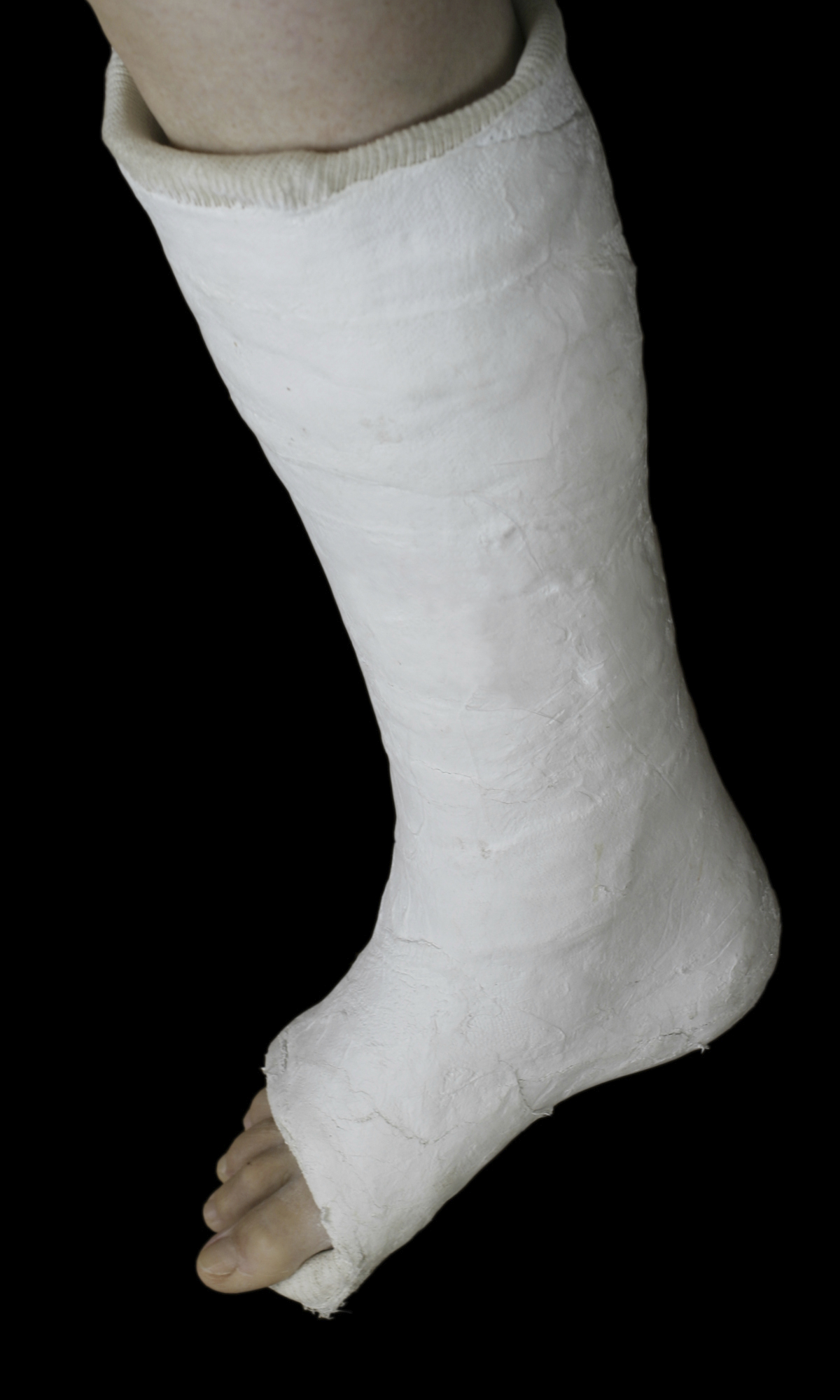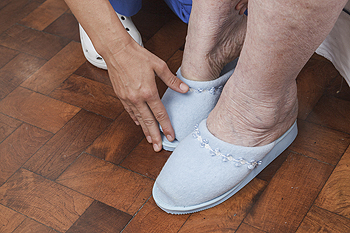Items filtered by date: July 2018
How to Strengthen Your Feet
 Strengthening exercises are very beneficial for runners who are constantly on their feet. These exercises should be done three or four days a week. A good exercise is to lay your feet flat on the ground, while lifting only the big toe. This should be repeated ten times. Next, try this same exercise except lift the rest of the toes while laying the big toe flat. Now, repeat this ten times. Another helpful exercise is to pick up marbles from the ground by curling your toes. Try to fill a small cup with all of the marbles and then try the same exercise with your other foot.
Strengthening exercises are very beneficial for runners who are constantly on their feet. These exercises should be done three or four days a week. A good exercise is to lay your feet flat on the ground, while lifting only the big toe. This should be repeated ten times. Next, try this same exercise except lift the rest of the toes while laying the big toe flat. Now, repeat this ten times. Another helpful exercise is to pick up marbles from the ground by curling your toes. Try to fill a small cup with all of the marbles and then try the same exercise with your other foot.
Exercising your feet regularly with the proper foot wear is a great way to prevent injuries. If you have any concerns about your feet, contact Dr. Douglas Mckay of New Jersey . Our doctor will treat your foot and ankle needs.
How to Prevent Running Injuries
Many common running injuries are caused by overuse and overtraining. When the back of the kneecap starts wearing out and starts causing pain in your knee, this is commonly referred to as runner’s knee. Runner’s knee is a decrease in strength in your quadriceps and can occur if you’re not wearing properly fitted or supporting shoes. To prevent runner’s knee, focusing on hip strengthening is a good idea, as well as strengthening your quads to keep the kneecaps aligned.
What Are Some Causes of Running Injuries?
- One cause of a common running injury is called iliotibial band syndrome.
- Plantar fasciitis is also another common injury.
- Stress fractures can occur from overtraining, lack of calcium, or even your running style.
Best Ways to Prevent Running Injuries
- Wear footwear that fits properly and suits your running needs.
- Running shoes are the only protective gear that runners have to safeguard them from injury.
- Make a training schedule. Adding strengthening exercises as well as regular stretching can help keep you strong and limber and can lessen the possibility of injuries.
- Stretching keeps muscles limber; this will help you gain better flexibility.
If you have any questions please feel free to contact one of our offices located in Caldwell, and Galloway, NJ . We offer the newest diagnostic and treatment technologies for all your foot and ankle needs.
Why Do I Have Poor Circulation?
 If you experience numbness or a tingling sensation in the feet, you may have poor circulation. Additionally, some patients may feel a cramping or coldness in their toes and this may often be the result of the inability of the circulatory system to transport blood to the cells of the body. A condition known as peripheral vascular disease, which is also referred to as PVD, may often occur when the veins or arteries become blocked. This may cause wounds on the feet to heal slower than average, and may often be accompanied by a decrease in body temperature, which may cause the feet to feel cold. Research has shown that heart disease may be a leading cause of poor circulation, and this may include a specific condition known as arrhythmias, or an irregular heartbeat. If you are experiencing symptoms that are indicative of poor circulation in the feet, it’s advised to schedule a consultation with a podiatrist for additional information, including treatment options.
If you experience numbness or a tingling sensation in the feet, you may have poor circulation. Additionally, some patients may feel a cramping or coldness in their toes and this may often be the result of the inability of the circulatory system to transport blood to the cells of the body. A condition known as peripheral vascular disease, which is also referred to as PVD, may often occur when the veins or arteries become blocked. This may cause wounds on the feet to heal slower than average, and may often be accompanied by a decrease in body temperature, which may cause the feet to feel cold. Research has shown that heart disease may be a leading cause of poor circulation, and this may include a specific condition known as arrhythmias, or an irregular heartbeat. If you are experiencing symptoms that are indicative of poor circulation in the feet, it’s advised to schedule a consultation with a podiatrist for additional information, including treatment options.
Poor circulation is a serious condition and needs immediate medical attention. If you have any concerns with poor circulation in your feet contact Dr. Douglas Mckay of New Jersey . Our doctor will treat your foot and ankle needs.
Poor Circulation in the Feet
Poor blood circulation in the feet and legs is can be caused by peripheral artery disease (PAD), which is the result of a buildup of plaque in the arteries.
Plaque buildup or atherosclerosis results from excess calcium and cholesterol in the bloodstream. This can restrict the amount of blood which can flow through the arteries. Poor blood circulation in the feet and legs are sometimes caused by inflammation in the blood vessels, known as vasculitis.
Causes
Lack of oxygen and oxygen from poor blood circulation restricts muscle growth and development. It can also cause:
- Muscle pain, stiffness, or weakness
- Numbness or cramping in the legs
- Skin discoloration
- Slower nail & hair growth
- Erectile dysfunction
Those who have diabetes or smoke are at greatest risk for poor circulation, as are those who are over 50. If you have poor circulation in the feet and legs it may be caused by PAD and is important to make changes to your lifestyle in order to reduce risk of getting a heart attack or stroke. Exercise and maintaining a healthy lifestyle will dramatically improve conditions.
As always, see a podiatrist as he or she will assist in finding a regimen that suits you. A podiatrist can also prescribe you any needed medication.
If you have any questions please feel free to contact one of our offices located in Caldwell, and Galloway, NJ . We offer the newest diagnostic and treatment technologies for all your foot and ankle needs.
Possible Treatments Options for a Broken Ankle
 The pain and discomfort may be overwhelming if you experience a broken ankle. Research has shown that treatment needs to be started as quickly as possible and this may extend for a period of six to twelve weeks. There are specific symptoms that are associated with a broken ankle, including swelling and bruising, the inability to stand or walk on your foot, and the ankle appearing deformed if the bone is dislocated. An effective diagnosis is typically achieved by having an X-ray performed to determine the severity of the fracture. If the break is not severe, the patient may be fitted with a protective boot or a plaster cast in addition to using crutches, which are designed to keep the weight off the ankle. For more severe fractures, the bone may have to be realigned through manual manipulation or surgery, which may require wires and screws to be inserted into your foot. Please consult with a podiatrist if you feel you have broken your ankle to determine the proper treatment options.
The pain and discomfort may be overwhelming if you experience a broken ankle. Research has shown that treatment needs to be started as quickly as possible and this may extend for a period of six to twelve weeks. There are specific symptoms that are associated with a broken ankle, including swelling and bruising, the inability to stand or walk on your foot, and the ankle appearing deformed if the bone is dislocated. An effective diagnosis is typically achieved by having an X-ray performed to determine the severity of the fracture. If the break is not severe, the patient may be fitted with a protective boot or a plaster cast in addition to using crutches, which are designed to keep the weight off the ankle. For more severe fractures, the bone may have to be realigned through manual manipulation or surgery, which may require wires and screws to be inserted into your foot. Please consult with a podiatrist if you feel you have broken your ankle to determine the proper treatment options.
Broken ankles need immediate treatment. If you are seeking treatment, contact Dr. Douglas Mckay from New Jersey . Our doctor can provide the care you need to keep you pain-free and on your feet.
Broken Ankles
A broken ankle is experienced when a person fractures their tibia or fibula in the lower leg and ankle area. Both of these bones are attached at the bottom of the leg and combine to form what we know to be our ankle.
When a physician is referring to a break of the ankle, he or she is usually referring to a break in the area where the tibia and fibula are joined to create our ankle joint. Ankles are more prone to fractures because the ankle is an area that suffers a lot of pressure and stress. There are some obvious signs when a person experiences a fractured ankle, and the following symptoms may be present.
Symptoms of a Fractured Ankle
- Excessive pain when the area is touched or when any pressure is placed on the ankle
- Swelling around the area
- Bruising of the area
- Area appears to be deformed
If you suspect an ankle fracture, it is recommended to seek treatment as soon as possible. The sooner you have your podiatrist diagnose the fracture, the quicker you’ll be on the way towards recovery.
If you have any questions, please feel free to contact one of our offices located in Caldwell, and Galloway, NJ . We offer the newest diagnostic and treatment technologies for all your foot care needs.
How Can I Find Relief From My Arthritic Feet?
 If you are afflicted with arthritic feet, you may find it difficult to perform certain activities, including walking. There is typically a moderate level of inflammation that surrounds the joints of the foot, which may produce considerable pain and discomfort. There are several different forms of arthritis which may affect the feet. If the cartilage begins to decay at the base of the toe, you may have what is referred to as osteoarthritis. This may contribute to other foot conditions such as bunions. Preventive measures may include choosing to wear wider shoes that do not put pressure on the bunion. Additionally, if the joints on the ball of the foot become inflamed, you may have rheumatoid arthritis. This may cause the bone to rub and push against the skin on the sole of the foot, which can often produce severe pain. A possible treatment option that may temporarily provide moderate relief involves attaching a long strip of leather to the bottom of the shoe behind the arch. This may aid in reducing a portion of the pressure that is often associated with this type of arthritis. It’s suggested to consult with a podiatrist to discuss further relief remedies and treatment protocols.
If you are afflicted with arthritic feet, you may find it difficult to perform certain activities, including walking. There is typically a moderate level of inflammation that surrounds the joints of the foot, which may produce considerable pain and discomfort. There are several different forms of arthritis which may affect the feet. If the cartilage begins to decay at the base of the toe, you may have what is referred to as osteoarthritis. This may contribute to other foot conditions such as bunions. Preventive measures may include choosing to wear wider shoes that do not put pressure on the bunion. Additionally, if the joints on the ball of the foot become inflamed, you may have rheumatoid arthritis. This may cause the bone to rub and push against the skin on the sole of the foot, which can often produce severe pain. A possible treatment option that may temporarily provide moderate relief involves attaching a long strip of leather to the bottom of the shoe behind the arch. This may aid in reducing a portion of the pressure that is often associated with this type of arthritis. It’s suggested to consult with a podiatrist to discuss further relief remedies and treatment protocols.
Arthritis can be a difficult condition to live with. If you are seeking treatment, contact Dr. Douglas Mckay from New Jersey . Our doctor can provide the care you need to keep you pain-free and on your feet.
Arthritic Foot Care
Arthritis is a joint disorder that involves the inflammation of different joints in your body, such as those in your feet. Arthritis is often caused by a degenerative joint disease and causes mild to severe pain in all affected areas. In addition to this, swelling and stiffness in the affected joints can also be a common symptom of arthritis.
In many cases, wearing ill-fitting shoes can worsen the effects and pain of arthritis. Wearing shoes that have a lower heel and extra room can help your feet feel more comfortable. In cases of rheumatoid arthritis, the arch in your foot may become problematic. Buying shoes with proper arch support that contour to your feet can help immensely.
Alleviating Arthritic Pain
- Exercises that stretch the foot can prevent further pain and injury and increase mobility
- Most of the pain can be alleviated with anti-inflammatory drugs, heat, and topical medications
- Massages can help temporarily alleviate pain.
It is best to see your doctor for the treatment that is right for your needs and symptoms. Conditions vary, and a podiatrist can help you determine the right method of care for your feet.
If you have any questions, please feel free to contact one of our offices located in Caldwell, and Galloway, NJ . We offer the newest diagnostic tools and technology to treat your foot and ankle needs.
What Does Hammertoe Look Like?
 A deformity of the toes that resemble a claw-like shape may be referred to as hammertoe. If the toes do not have adequate room to move about, they may have to bend to fit into the shoe. Additionally, if tight socks are worn, the toes may have to squeeze together, which may cause them to overlap. This condition can produce discomfort and pain, and may possibly cause corns and calluses to develop. Preventive measures may include choosing to wear shoes that fit correctly, while making sure there is ample room in the top of the shoe. Patients who have high arches or bunions may be more susceptible in developing hammertoe, and research has shown that permanent removal of a hammertoe affliction means surgery. It’s suggested to schedule a consultation with a podiatrist who can recommend temporary relief options, which may include custom-made protective pads over the affected area.
A deformity of the toes that resemble a claw-like shape may be referred to as hammertoe. If the toes do not have adequate room to move about, they may have to bend to fit into the shoe. Additionally, if tight socks are worn, the toes may have to squeeze together, which may cause them to overlap. This condition can produce discomfort and pain, and may possibly cause corns and calluses to develop. Preventive measures may include choosing to wear shoes that fit correctly, while making sure there is ample room in the top of the shoe. Patients who have high arches or bunions may be more susceptible in developing hammertoe, and research has shown that permanent removal of a hammertoe affliction means surgery. It’s suggested to schedule a consultation with a podiatrist who can recommend temporary relief options, which may include custom-made protective pads over the affected area.
Hammertoe
Hammertoes can be a painful condition to live with. For more information, contact Dr. Douglas Mckay from New Jersey . Our doctor will answer any of your foot- and ankle-related questions.
Hammertoe is a foot deformity that affects the joints of the second, third, fourth, or fifth toes of your feet. It is a painful foot condition in which these toes curl and arch up, which can often lead to pain when wearing footwear.
Symptoms
- Pain in the affected toes
- Development of corns or calluses due to friction
- Inflammation
- Redness
- Contracture of the toes
Causes
Genetics – People who are genetically predisposed to hammertoe are often more susceptible
Arthritis – Because arthritis affects the joints in your toes, further deformities stemming from arthritis can occur
Trauma – Direct trauma to the toes could potentially lead to hammertoe
Ill-fitting shoes – Undue pressure on the front of the toes from ill-fitting shoes can potentially lead to the development of hammertoe
Treatment
Orthotics – Custom made inserts can be used to help relieve pressure placed on the toes and therefore relieve some of the pain associated with it
Medications – Oral medications such as anti-inflammatories or NSAIDs could be used to treat the pain and inflammation hammertoes causes. Injections of corticosteroids are also sometimes used
Surgery – In more severe cases where the hammertoes have become more rigid, foot surgery is a potential option
If you have any questions please contact one of our offices located in Caldwell, and Galloway, NJ . We offer the newest diagnostic and treatment technologies for all your foot and ankle needs.



